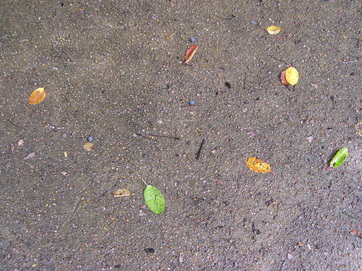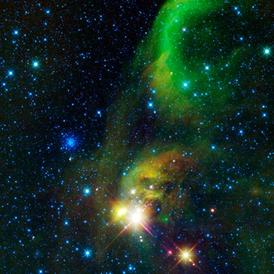I often enjoy looking up the definition of words (nerdy but true) and especially words that are readily recognizable and used fairly often, words that you feel you shouldn't have to look up in the dictionary because they're so embedded in your vocabulary that to look them up would be a pointless act. Try to define these words out of thin air, though, and you'll be confronted with a realization that you actually don't know the word as fully as you originally thought.
For some reason, I felt the need to look up the definition of "science" this evening, a word I associate with the classes in school where I dissected frogs, mixed chemicals, or built a rudimentary catapult; a word that often titles a section of the news or that is simplified into a cartoon of test tubes, beakers, and mad scientists.
Search the phrase "definition of science" on Google, and the following will be the first result, among many other similar definitions:
"the intellectual and practical activity encompassing the systematic study of the structure and behavior of the physical and natural world through observation and experiment"
While I've noticed some connections in the past between the subject matter of my work and various sciences dealing with the natural world, I would often set aside these connections after thinking about them for only a short while as the sciences seemed based too much in some kind of concrete problem solving (at least on the surface). Looking over this definition today, however, surprised me as to how much it relates to my process of art making: I almost always work from observation of some organically created structure or composition found in my immediate environment, such as a windblown napkin found on the sidewalk or the random arrangement of various natural debris found on the ground after a rain. I study them through repetitive and methodical modes of representation/abstraction, pursuing some kind of truth again and again by tracing and retracing their contours and their placements in space.
This truth can be equated with fact in science; it can also be equated with core spiritual beliefs.
My work, however, never really gets to any factual conclusion. It doesn't declare that something is or is not. It also doesn't prove any spiritual belief. Rather, it seems to be all about the process itself of understanding or at least trying to understand something so much greater and mysterious than myself.
Now search "science and art." A link to a 2011 program from NPR titled "Connecting Science and Art" will pop up, hosted by Ira Flatow, who begins with a quote by Albert Einstein: "The most beautiful thing we can experience is the mysterious. It is the source of all true art and all science. So the unknown, the mysterious, is where art and science meet."
If "the most beautiful thing we can experience is the mysterious," should we try to solve it, name it, prove it? Or should we just "experience" it, meditate upon it?
For some reason, I felt the need to look up the definition of "science" this evening, a word I associate with the classes in school where I dissected frogs, mixed chemicals, or built a rudimentary catapult; a word that often titles a section of the news or that is simplified into a cartoon of test tubes, beakers, and mad scientists.
Search the phrase "definition of science" on Google, and the following will be the first result, among many other similar definitions:
"the intellectual and practical activity encompassing the systematic study of the structure and behavior of the physical and natural world through observation and experiment"
While I've noticed some connections in the past between the subject matter of my work and various sciences dealing with the natural world, I would often set aside these connections after thinking about them for only a short while as the sciences seemed based too much in some kind of concrete problem solving (at least on the surface). Looking over this definition today, however, surprised me as to how much it relates to my process of art making: I almost always work from observation of some organically created structure or composition found in my immediate environment, such as a windblown napkin found on the sidewalk or the random arrangement of various natural debris found on the ground after a rain. I study them through repetitive and methodical modes of representation/abstraction, pursuing some kind of truth again and again by tracing and retracing their contours and their placements in space.
This truth can be equated with fact in science; it can also be equated with core spiritual beliefs.
My work, however, never really gets to any factual conclusion. It doesn't declare that something is or is not. It also doesn't prove any spiritual belief. Rather, it seems to be all about the process itself of understanding or at least trying to understand something so much greater and mysterious than myself.
Now search "science and art." A link to a 2011 program from NPR titled "Connecting Science and Art" will pop up, hosted by Ira Flatow, who begins with a quote by Albert Einstein: "The most beautiful thing we can experience is the mysterious. It is the source of all true art and all science. So the unknown, the mysterious, is where art and science meet."
If "the most beautiful thing we can experience is the mysterious," should we try to solve it, name it, prove it? Or should we just "experience" it, meditate upon it?


 RSS Feed
RSS Feed
